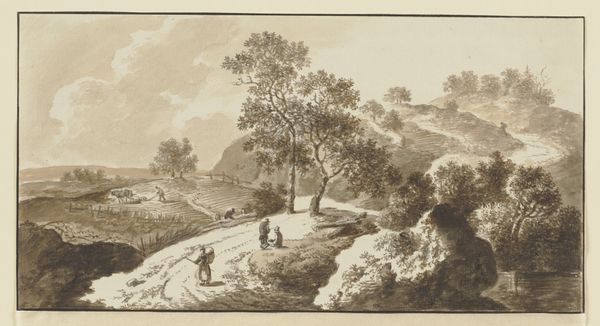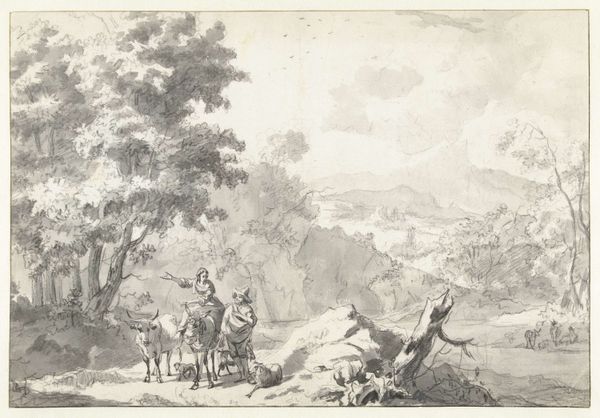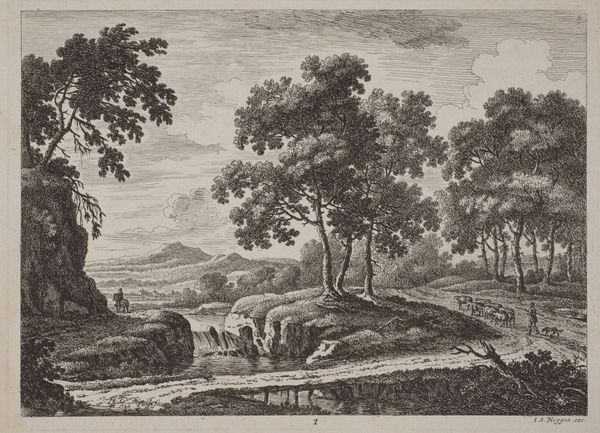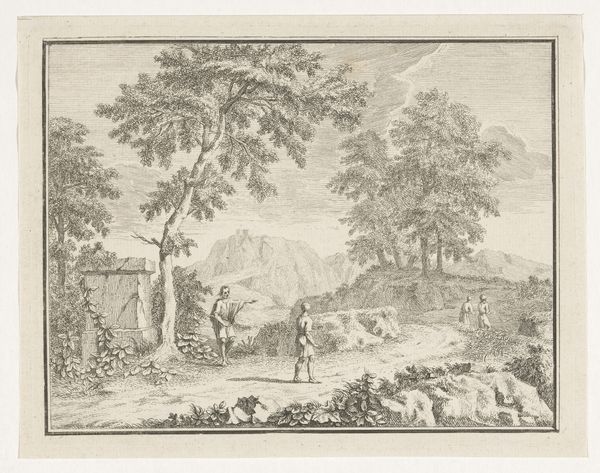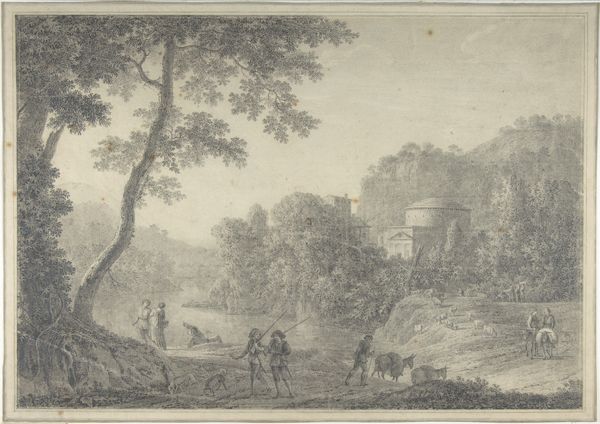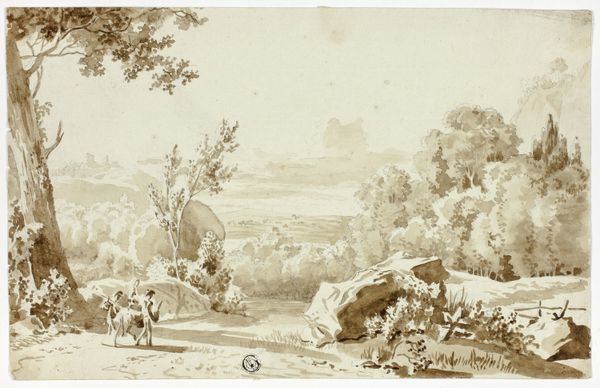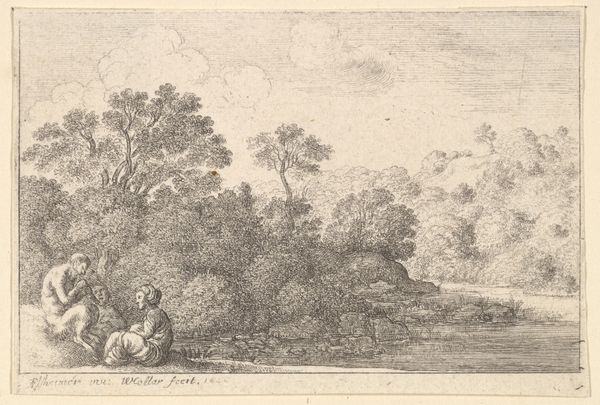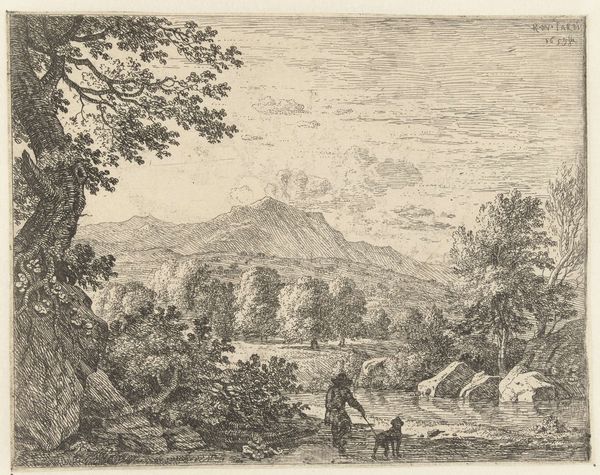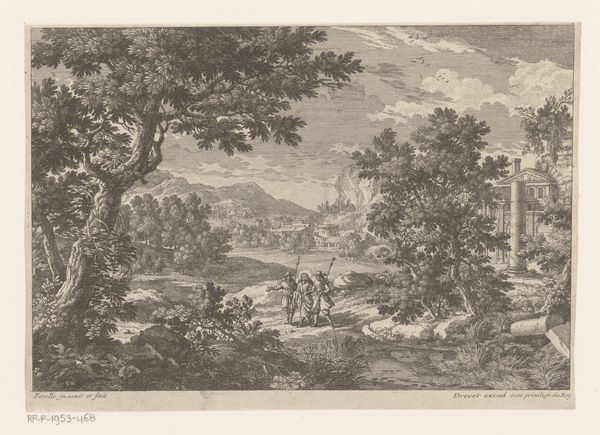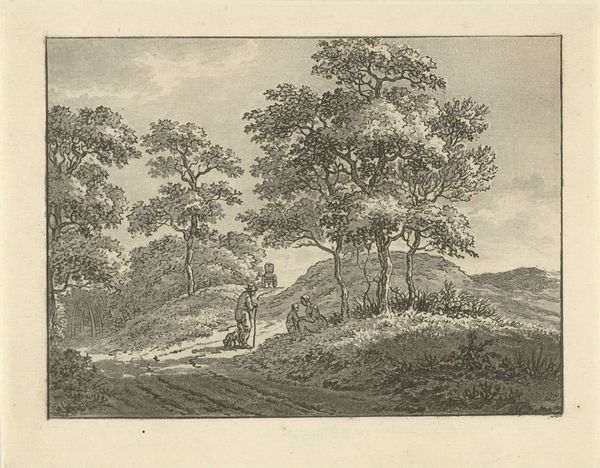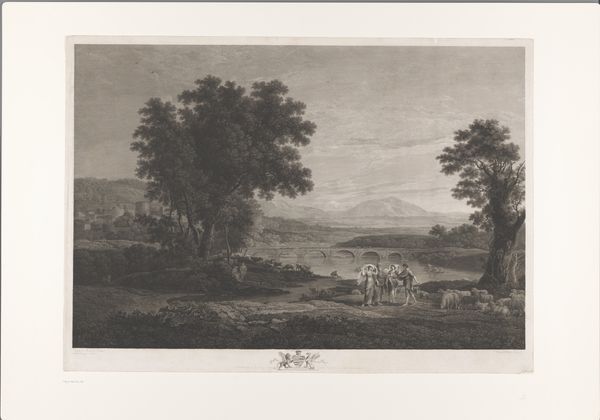
Italianate Landscape with Dancer, Musicians and Goats c. 1750
0:00
0:00
Dimensions: 129 × 177 mm
Copyright: Public Domain
Curator: We're looking at Cornelis van Poelenburgh's "Italianate Landscape with Dancer, Musicians and Goats," dating back to approximately 1750. It’s rendered in graphite, etching, and intaglio on paper, currently held at The Art Institute of Chicago. Editor: It’s a tranquil scene, bathed in soft light. The rounded shape, like a porthole, really focuses my attention. The details, particularly in the foliage and figures, draw me in. It has a classical, almost idealized quality to it. Curator: Indeed. The idealized is key here. These "Italianate" landscapes, popular in Northern Europe, often reflected a longing for a simpler, classical past. We have figures presented not necessarily realistically, but according to societal positions: note who has control of a musical instrument versus who is dancing or working with livestock. There’s definitely a power structure displayed in an aesthetically pleasing manner. Editor: You're right. Considering the social context, the leisure presented contrasts starkly with the labor enabling it. What can you tell me about its construction as both drawing and etching? What kind of choices led Poelenburgh to this technique? Curator: His blend of techniques signifies accessibility and distribution. While graphite offers precision, etching enables the reproduction and circulation of the artwork to a wider audience, spreading the image of the Italian countryside across social groups who are invested in class display. Editor: I hadn't considered the production process in that light, the graphite creating the basis that etching can replicate, therefore reaching more homes. Knowing this changes how I see the relationship of landscape, labor, and audience here. It goes beyond pure aesthetics and starts entering the arena of political statement. Curator: Precisely! Poelenburgh capitalizes on this moment of classical fascination. This fascination provides not only beautiful art, but a means to dissect what "classical beauty" represented, then and now. It presents interesting tensions surrounding consumption, identity, and landscape. Editor: Absolutely, reflecting on this print underscores art's connection to cultural attitudes around wealth, privilege, and the very idea of pastoral escape. Curator: Agreed. I think viewing "Italianate Landscape with Dancer, Musicians and Goats" this way gives it new meanings that feel vital. Editor: Definitely. I’m taking away so much from thinking about it through both the lens of process and the historical frameworks.
Comments
No comments
Be the first to comment and join the conversation on the ultimate creative platform.

